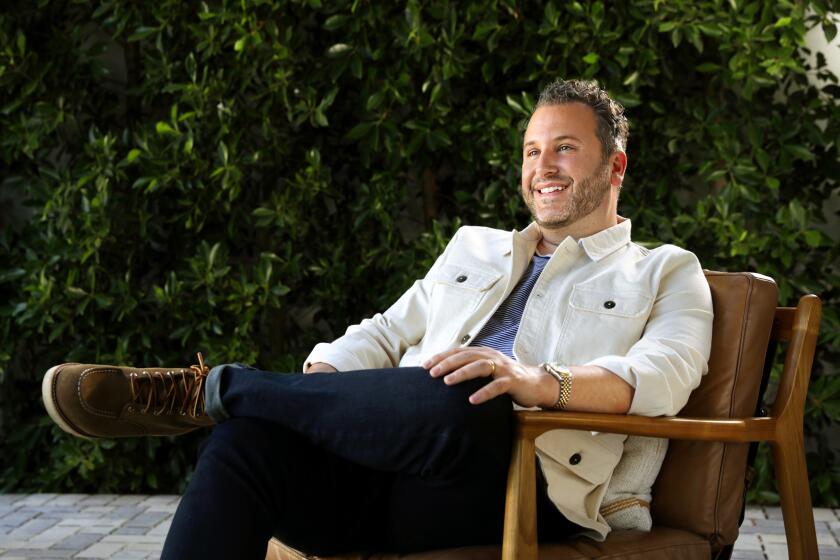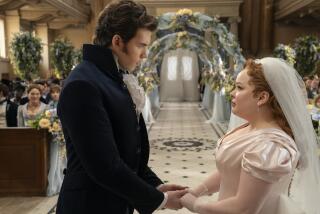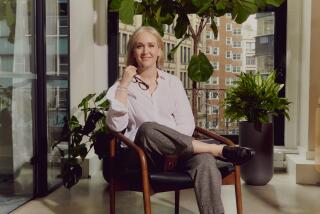Meet the real-life Sharmas of Regency London: The history behind ‘Bridgerton’ Season 2
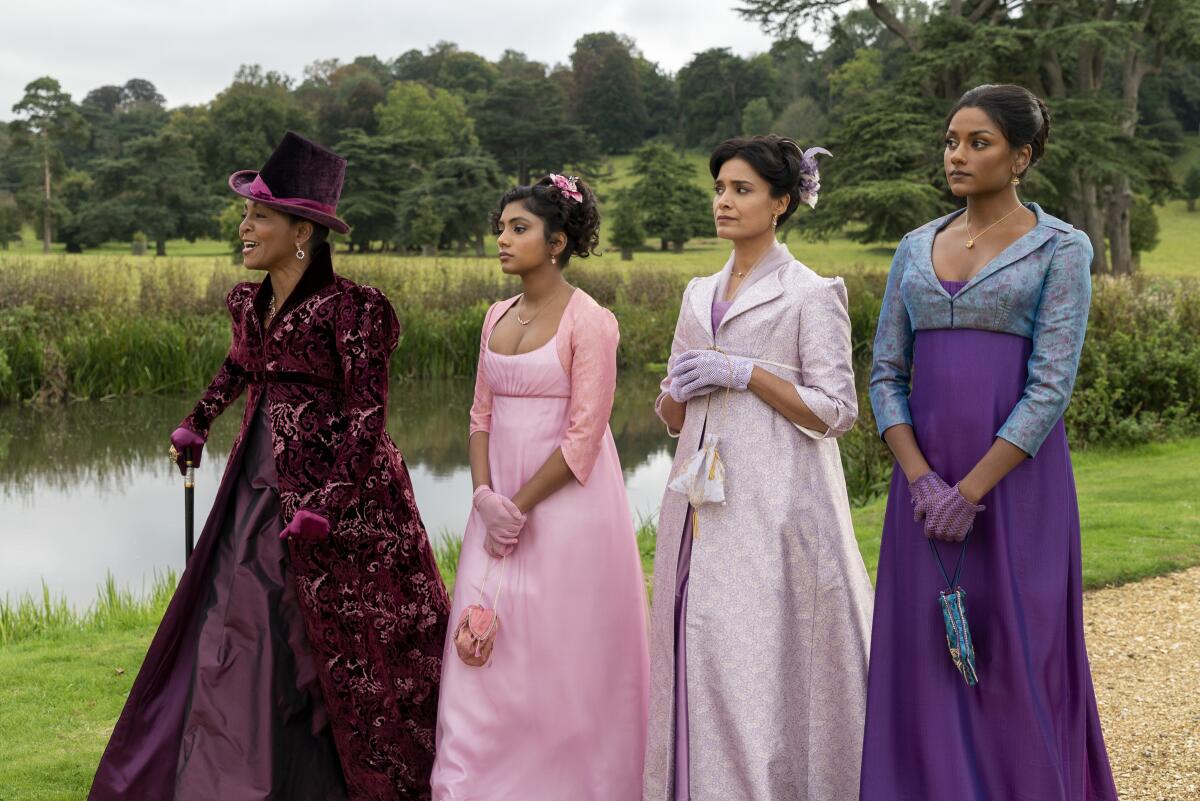
- Share via
When “Bridgerton” premiered in late 2020, it broke the period drama mold by presenting an exciting, reimagined version of Regency England with a racially integrated aristocracy.
The new season of “Bridgerton,” which premiered Friday, builds on the show’s successful formula by introducing a South Asian family to the ton, the Sharmas.
“‘Bridgerton’ wouldn’t be ‘Bridgerton’ without the colorful, multiethnic and multihued world we established in Season 1,” said creator Chris Van Dusen.
The family includes mother Lady Mary Sheffield Sharma (Shelley Conn), who was raised in an aristocratic English family but married a lowly clerk and has spent the last few decades in India raising her daughter, Edwina (Charithra Chandran), and stepdaughter, Kate (Simone Ashley). Now widowed and estranged from her wealthy parents, Mary has returned to London to help Edwina find a suitable husband. Complications arise when Edwina becomes engaged to Viscount Anthony Bridgerton (Jonathan Bailey), who is in turn developing feelings for the feisty Kate.
Season 2 is based on “The Viscount Who Loved Me,” the second book in author Julia Quinn’s series of romance novels about the Bridgerton siblings. Van Dusen said he always knew that, should he get a chance to do a second season of “Bridgerton,” he wanted to expand the show’s multicultural perspective by making the Sheffields of “The Viscount Who Loved Me” into the Sharmas.
Historians help us sort through fact and fiction in executive producer Shonda Rhimes’ saucy Netflix drama about the 19th century English marriage market.
Working with his writing staff and historians including Priya Atwal, author of “Royals and Rebels: The Rise and Fall of the Sikh Empire,” Van Dusen set out to give the Sharmas “as much of an authentic specificity as we could.”
Details reflecting the family’s South Asian heritage are woven throughout the season: Kate speaks a few words of Hindi when we first meet her; Edwina takes part in a haldi ceremony before her wedding; and in a lovely, tender moment, Kate washes Edwina’s hair with oil.
“‘Bridgerton’ is a show that celebrates things that aren’t typically seen or heard in this genre,” Van Dusen said. “The world was a lot less homogenous during this time period than some would like us to believe. Our goal with this show is for anyone who’s watching to be able to see themselves reflected on screen and in our world.”
The second season is set in 1814, by which time there were deep economic and political ties between Britain and the Indian subcontinent. We spoke to some historians about the relationship between the European and Indian ruling classes and the real-life Sharmas of Regency London.
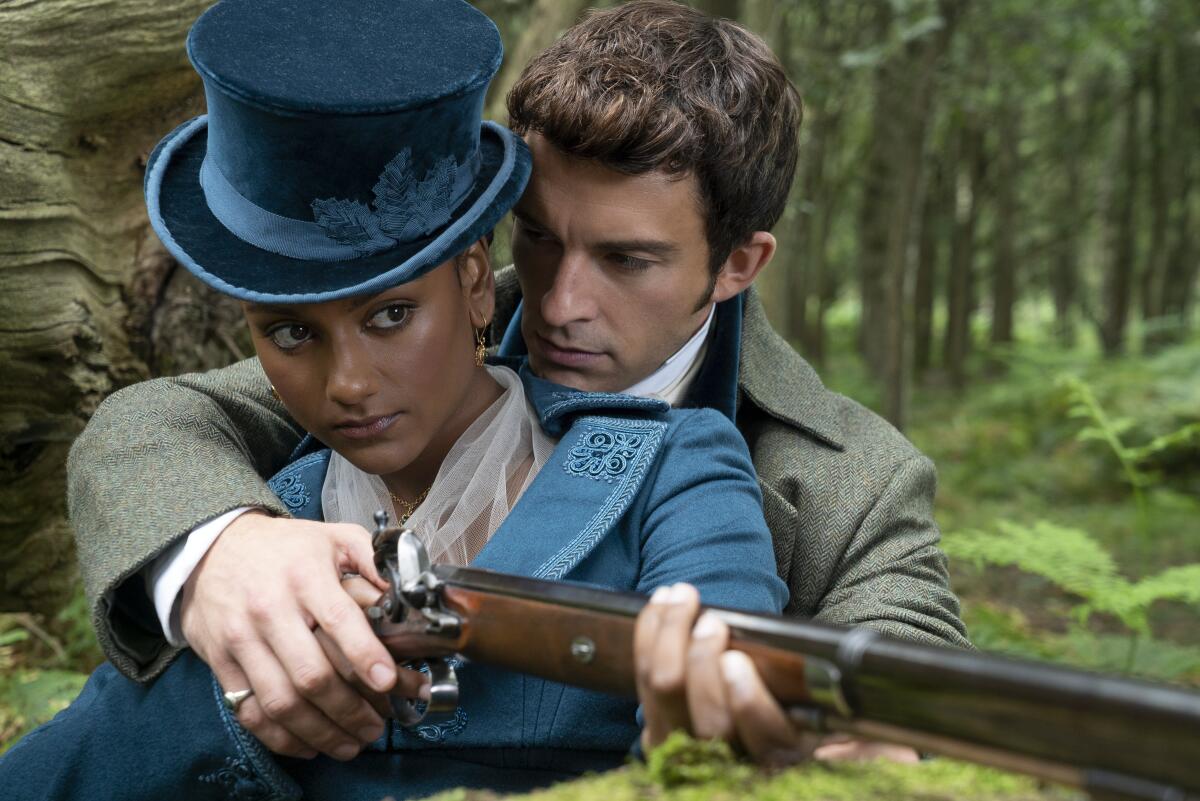
Ties between Britain and India were well-established by the Regency era
Season 2 of “Bridgerton” is set in 1814, more than 200 years after the founding of the East India Company, which “marked the beginning of a long, complicated and often violent and exploitative relationship between Britain and parts of India,” said Hannah Greig, a professor of history at the University of York and a consultant on “Bridgerton.”
During this time, “India was not a single entity but a subcontinent of provinces and states,” she said.
Some of these areas had been violently annexed by the East India Company and its mighty mercenary army, but others, such as the Sikh Empire in the north, remained autonomous.
“The complex economic and political ties between the countries brought these elite and courtly societies into contact,” said Greig, “and also conflict.”
“There was a lot of travel between Britain and India, particularly given the importance of the East India Company to British economics, politics and the state, and the huge demand for luxury goods from India,” Greig said.
The journey from Mumbai (then known as Bombay) to England took roughly six months and would be timed to avoid monsoon season. Though in “Bridgerton” Kate plans to make the trip back to India before she and Anthony finally get together, Greig said it would have been unusual for an unmarried elite woman to travel unaccompanied.
Chris Van Dusen breaks down Season 2 of the Netflix juggernaut, from a new, more chaste approach to the central romance to writing out Regé-Jean Page.
There were some South Asians in London at this time, but few whose lives have been recorded by history
Trade brought people from all over the world to Regency London, a multicultural capital city.
Few of these people would have been included “in the exclusive ranks of the ton” as the Sharmas are, Greig said, but there were many people of color in London more broadly, working as shopkeepers, merchants, craftsmen and domestic servants and sailors. “Often their histories, the histories of the non-elite, are more hidden, and their lives, names and stories remain unwritten.”
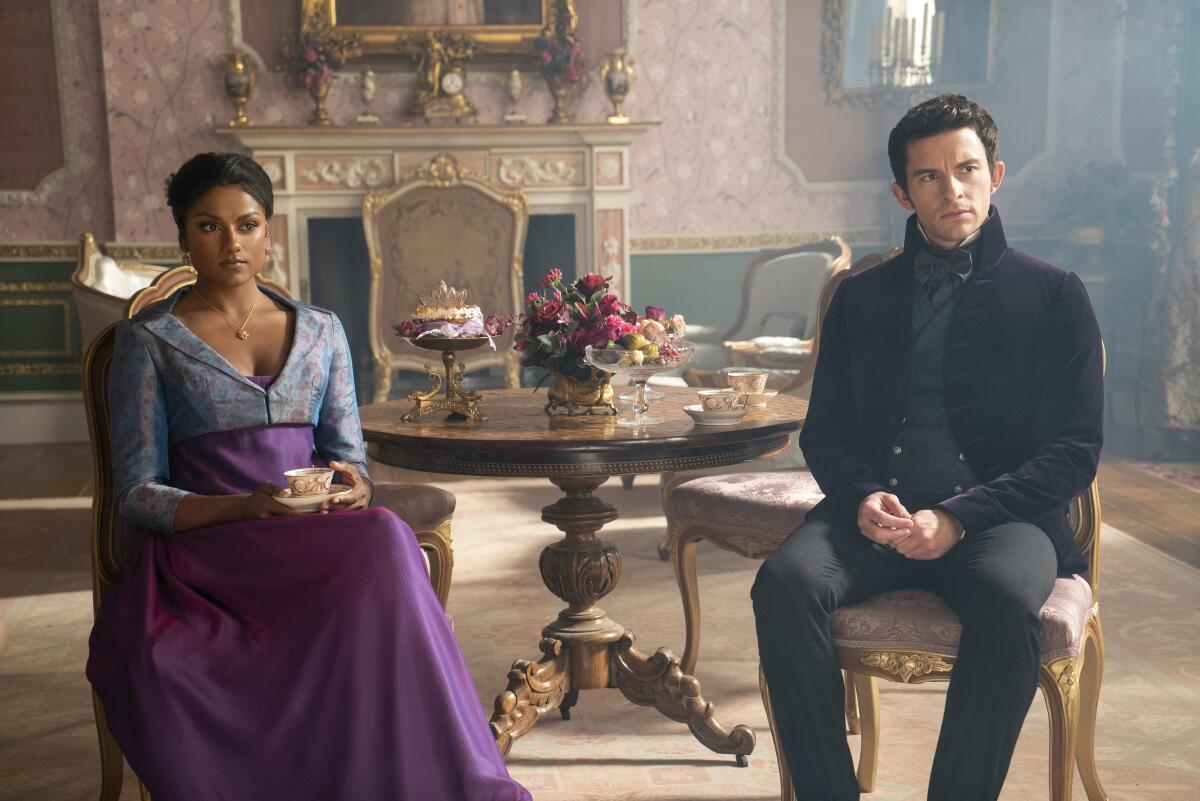
Relationships between British men and Indian women were common — in India
Relationships between European men and local women in India were extremely common across all levels of society throughout colonial rule, according to Durba Ghosh, a professor at Cornell University and author of “Sex and the Family in Colonial India.”
“There were a lot of Indian women coming in and out of the military camps, to do housework, as well as sex work and provisioning,” said Ghosh. Many children were born to Indian women as a result of relationships with British men — so many, in fact, that the East India Company set up orphanages where these mixed-race children could be educated.
Intermarriage was not unheard of, but it was more common for men to return to England and settle down, leaving behind their children and the Indian women who’d given birth to them.
“It’s an open and public secret for most of these cases, that you have this relationship in the colony, but it’s acceptable for you to go back to Britain and marry somebody who’s more racially and socially appropriate,” Ghosh said.
Relationships between English women and Indian men were, of course, much more unusual because of the limited contact between these groups. Still, Ghosh said, some Indian sailors who traveled to London aboard East India Company ships stayed in London and may have had relationships with local women. “But it’s a very small population.”
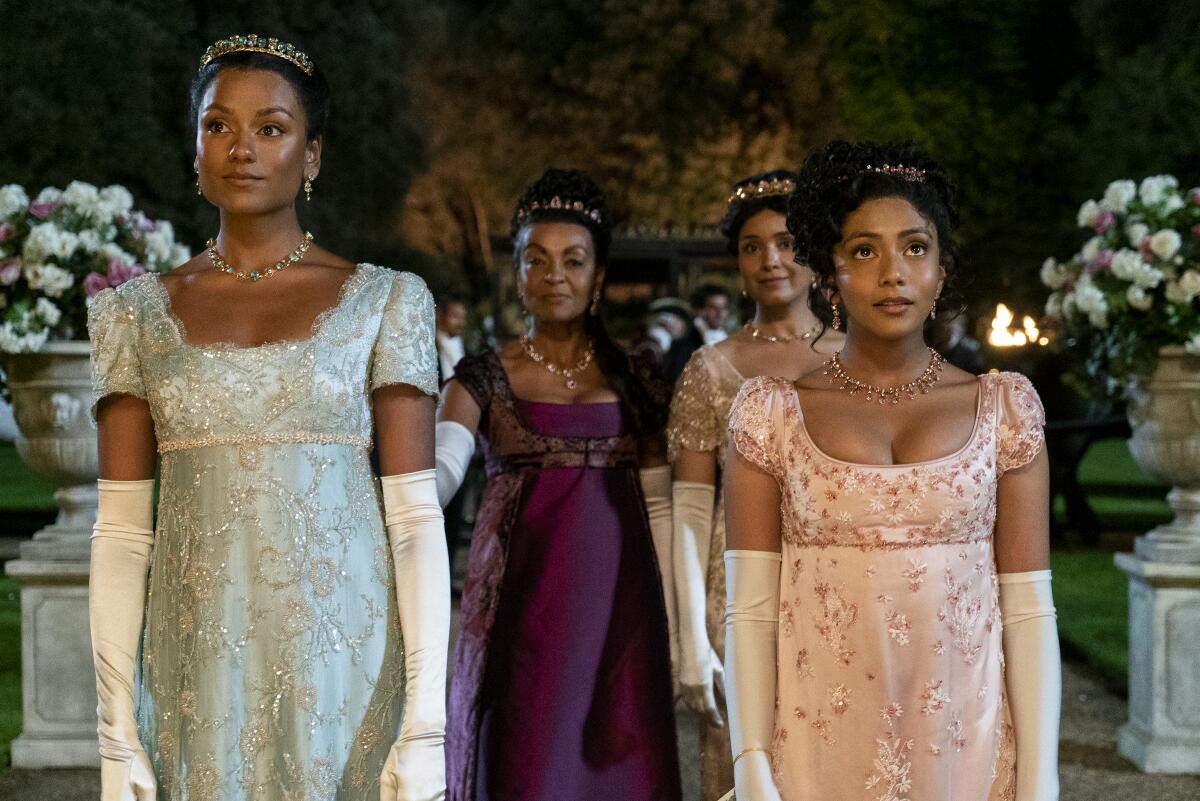
There were a few real women like the Sharma sisters, but they were rare
Ghosh has researched a number of South Asian women who, like the Sharma sisters, circulated among London society during the Regency Era, and were viewed as aristocratic. These women were used to being around Europeans and “were elite and educated in India, which allowed them to adjust to the expectations of social life in Georgian and Regency England,” Ghosh writes in an article for History Extra.
They included Kitty Kirkpatrick, the daughter of a powerful East India Company administrator and a young Muslim woman from a courtly household in Hyderabad. Kitty arrived in London at the age of 4 while her mother remained in India. It was extremely unusual for Indian women who had relationships with European men to relocate to England, Ghosh said.
But there were a few who did: Halima Begum, later known as Helene Bennett, was a Muslim noblewoman who had two children with a French mercenary soldier in India, then settled with him in a fashionable area of London. They never wed. She was buried in a Christian cemetery, but with a grave facing Mecca, according to Ghosh.
Elizabeth Ducarel, born Sharaf-un-nissa, had six children (her first at age 13) with Gerard Gustavus Ducarel, a district supervisor for the East India Company, and moved with him to different posts around India. They returned to England together in 1784 and later married. She was active in London society.
The women Ghosh was able to uncover in her research all adopted European names. (“It’s extremely unlikely the Sharmas would have had an Indian last name,” she said.)
Netflix’s sudsy romantic drama is back. But does it live up to the high bar set by Season 1? Staff writers Meredith Blake and Ashley Lee debate.
Kate’s romance with Anthony would have raised eyebrows
“A broken engagement was almost always a scandal, as it risked a woman’s reputation and meant a man might be sued for breach of promise,” Greig said. Kate’s uncertain parentage would have been a problem, even with a titled stepmother and a powerful advocate in the form of Lady Danbury. “So it is unlikely she would have been regarded as anything like an appropriate match for a viscount.”
Still, she said, history provides a few examples of marriages that bucked these norms, “like the matches made by sisters Misses Elizabeth and Maria Gunning to the very eligible Duke of Hamilton and Earl of Coventry in the 1750s, where they brought only beauty and no title or wealth to the London season, or the marriage of the Duke of Derby to the actress Elizabeth Farren in the 1790s,” after his first wife died.
More to Read
The complete guide to home viewing
Get Screen Gab for everything about the TV shows and streaming movies everyone’s talking about.
You may occasionally receive promotional content from the Los Angeles Times.
